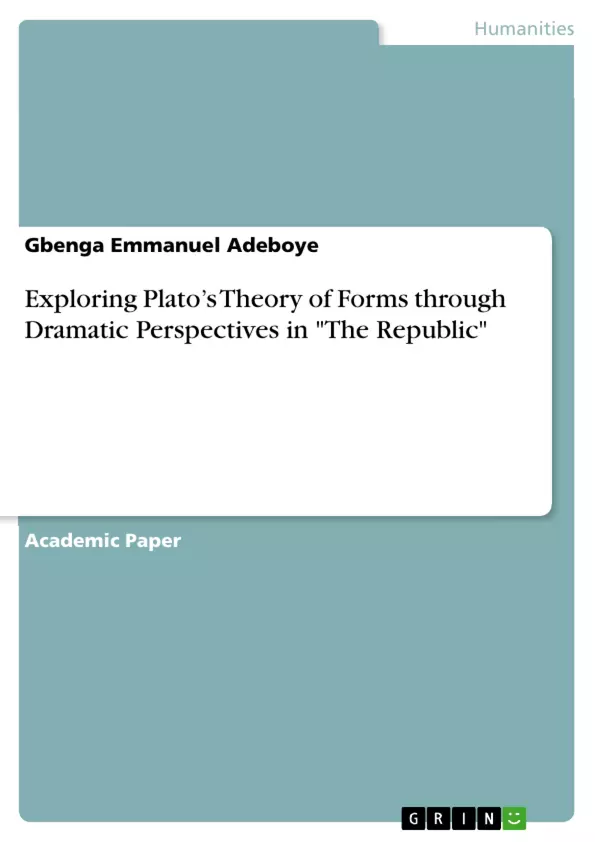Plato's Theory of Forms, a cornerstone of Western philosophy, offers a profound lens through which to examine the nature of reality. In "The Republic", Plato delves into the concept of Forms, positing that what we perceive in the physical world is but a shadow of a higher, immutable reality. This article critically analyzes Plato's Theory of Forms within the context of drama and theatre, exploring how written drama and theatrical performances serve as reflections of real-life events, albeit through a filtered lens. By examining mise en scene, actors, and media representations etc., this study reveals the intricate and symbiotic relationship between art and reality, as envisioned by Plato.
Plato's Theory of Forms challenges us to question the nature of reality and the validity of our perceptions. By critically examining drama, theatre and media representations, we can gain insight into the ways in which art reflects, distorts, and interprets reality. While written drama, theatrical performances, and media representations may offer glimpses of truth, they ultimately remain shadows of a higher reality, as envisioned by Plato. Through philosophical inquiry and artistic exploration, we continue the timeless quest to apprehend the eternal Forms that lie beyond the veil of appearances.
Inhaltsverzeichnis (Table of Contents)
- Abstract
- Introduction
- Plato's Theory of Forms
- Drama as a Reflection of Reality
- Conclusion
Zielsetzung und Themenschwerpunkte (Objectives and Key Themes)
This research investigates Plato's Theory of Forms within the context of drama and theatre, examining how these art forms mirror, distort, and interpret reality. It explores how written drama and theatrical performances reflect real-life events, albeit through a filtered lens.
- Plato's Theory of Forms
- Drama as a Reflection of Reality
- The Role of Mimesis in Education
- The Ethical Implications of Artistic Representation
- The Relationship Between Art and Reality
Zusammenfassung der Kapitel (Chapter Summaries)
- Abstract: This chapter provides a brief overview of the research, highlighting Plato's Theory of Forms and its application to drama and theatre.
- Introduction: This chapter introduces Plato's Theory of Forms, explaining the concept of Forms as eternal, unchanging, and perfect archetypes that transcend the physical world. It also introduces the concept of mimesis and its role in drama and theatre.
- Plato's Theory of Forms: This chapter delves deeper into Plato's Theory of Forms, exploring the distinction between the world of appearances and the realm of Forms. It utilizes the allegory of the Cave as a metaphor for the journey of philosophical enlightenment. The chapter also examines how the allegory reflects the human condition and the importance of philosophical inquiry.
- Drama as a Reflection of Reality: This chapter discusses how drama, both written and performed, serves as a medium through which artists interpret and represent reality. It explores how drama reflects the playwright's interpretation of reality, filtered through their own perceptions and biases. The chapter examines the role of mimesis in drama and its implications for education.
Schlüsselwörter (Keywords)
Plato's Theory of Forms, drama, theatre, mimesis, reality, representation, allegory, education, ethics, artistic representation, philosophical inquiry, human condition.
- Quote paper
- Gbenga Emmanuel Adeboye (Author), 2024, Exploring Plato’s Theory of Forms through Dramatic Perspectives in "The Republic", Munich, GRIN Verlag, https://www.hausarbeiten.de/document/1459394


